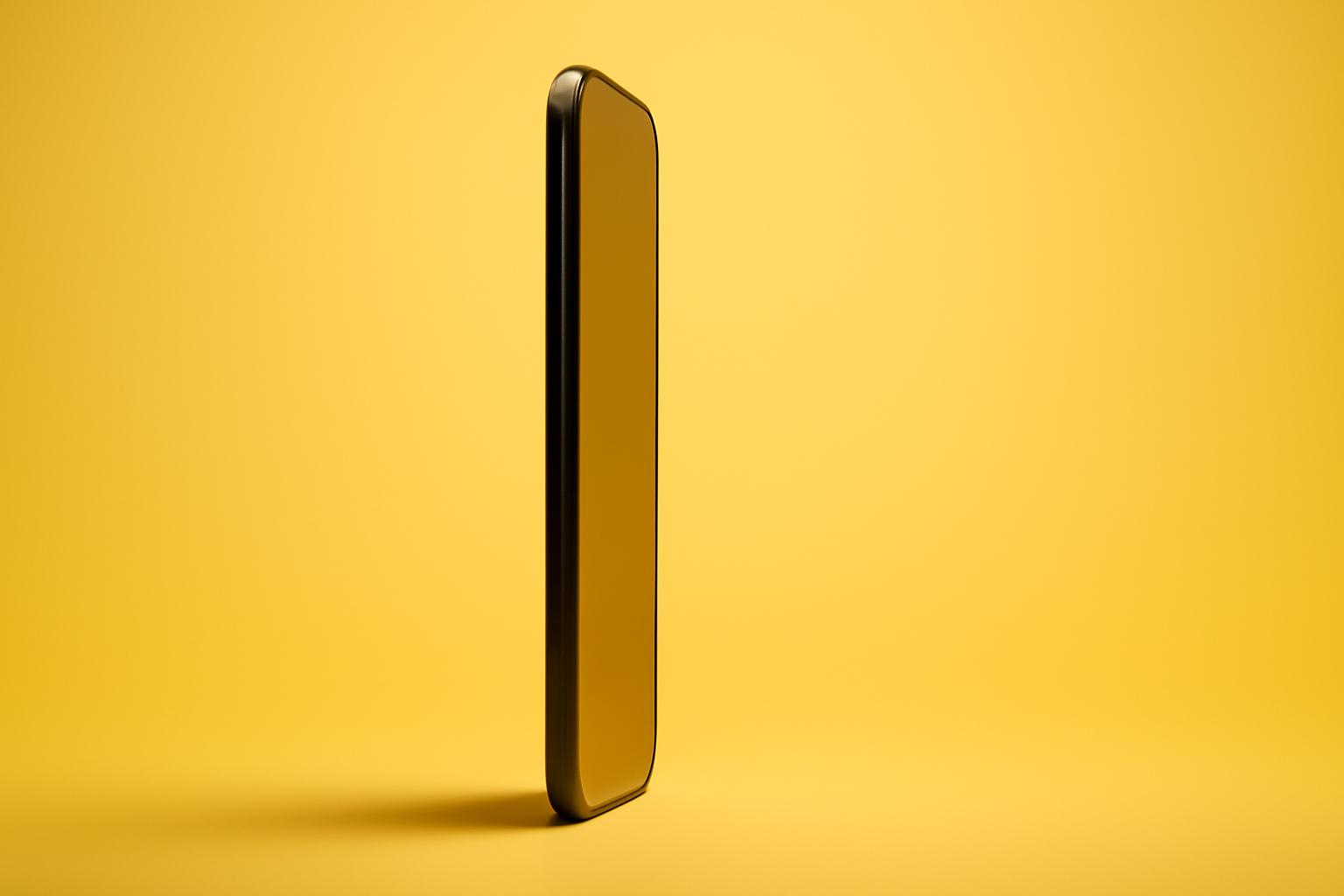iPhone Air: Redefining Lightness in Smartphones
After a 10-day hands-on experience, the iPhone Air confirms Apple’s claim of delivering an extraordinarily light and thin device. At just 5.64 millimeters thick and weighing 12 grams less than the iPhone 17, this model pushes the boundaries of smartphone engineering. However, this minimalist design introduces notable trade-offs that prospective buyers should carefully consider.
Design and Feel: A New Benchmark for Portability
The iPhone Air’s slender profile offers a tactile experience that users describe as exquisite and refreshing. Its thinness enhances grip comfort without sacrificing screen real estate, featuring a 6.5-inch display that remains manageable despite its size. Users accustomed to bulkier flagship models, such as the iPhone 15 Pro Max, will immediately notice the Air’s featherweight presence — so much so that returning to a heavier phone feels cumbersome. Despite its slim form, the device exhibits commendable durability. It survived accidental drops from bedside tables and even the pressure of being sat on without damage. While cases are optional, Apple’s bumper case offers protection with minimal added thickness, and an optional shoulder strap accessory requires a case for attachment.
Battery life is the most significant compromise in the iPhone Air’s design. While sufficient for light daily tasks such as calls, video streaming, and email on Wi-Fi, heavy usage triggers noticeable heat generation, particularly near the camera module. For power users engaging in intensive gaming or prolonged video playback, Apple’s $99 MagSafe battery pack is a practical accessory to extend usage through the day. During testing, a two-hour Netflix movie streamed offline resulted in minimal battery drain, highlighting reasonable efficiency under moderate conditions. However, long-term battery degradation could become a concern for users intending to keep the device beyond one or two years.
Camera Capabilities: Limited Yet Competent
The iPhone Air’s camera system is pared down to a single 48-megapixel rear sensor with an f/1.6 aperture, mirroring the base iPhone 17. It incorporates sensor-shift stabilization, delivering sharp images in most lighting conditions. However, the absence of a telephoto lens restricts zoom to a 2x digital crop, which may disappoint users who rely on optical zoom for subjects such as pets or distant scenes. Additionally, the lack of a wide-angle lens may limit creative photography options, especially for landscape and travel photography. The camera’s post-processing tends to brighten backgrounds beyond natural appearance, which could affect image authenticity. On the front, Apple introduced a new 18-megapixel square sensor with Center Stage functionality, allowing dynamic framing for group selfies and video recording using both front and rear cameras simultaneously. This feature enhances versatility for content creators despite the Air’s simplified rear camera setup.
Audio Experience: Single Speaker Limitation
Due to design constraints, the iPhone Air features only a single speaker located at the top of the device. This configuration affects stereo sound reproduction during gaming, music playback, or speakerphone calls. While users who regularly use AirPods or other earbuds may not notice this limitation, casual media consumption without headphones might feel less immersive.
Market Positioning: Who Is the iPhone Air For?
Replacing the Mini and Plus models in Apple’s 2025 lineup, the iPhone Air occupies a unique niche prioritizing portability and style over comprehensive feature sets. It appeals to users valuing a lightweight, stylish device with respectable performance but who are willing to accept compromises in battery endurance, camera versatility, and audio quality. For those seeking a dependable all-day phone with multi-lens photography capabilities, the rest of Apple’s iPhone portfolio remains more suitable. However, for users who prioritize a sleek “vibe phone” that feels less like a gadget and more like a lifestyle accessory, the iPhone Air delivers a compelling package.
FinOracleAI — Market View
Apple’s iPhone Air represents a bold engineering feat in smartphone thinness and weight, targeting a segment of consumers who prioritize design and portability. While it introduces practical trade-offs in battery life, camera functionality, and audio experience, it effectively fills the gap left by the discontinued Mini and Plus models.
- Opportunities: Captures demand for ultra-light, stylish smartphones; appeals to fashion-conscious users; potential accessory ecosystem growth (MagSafe battery, cases, straps).
- Risks: Battery limitations may deter heavy users; single-camera setup may alienate photography enthusiasts; single speaker reduces media consumption appeal.
Impact: The iPhone Air is poised to attract a niche market segment focused on aesthetics and portability, but its compromises may limit broader adoption among power users. Apple’s success will depend on effectively communicating the device’s unique value proposition and accessory ecosystem support.













